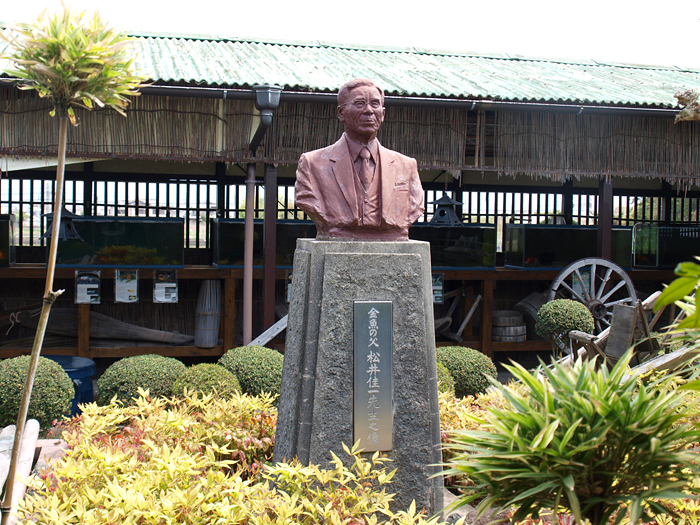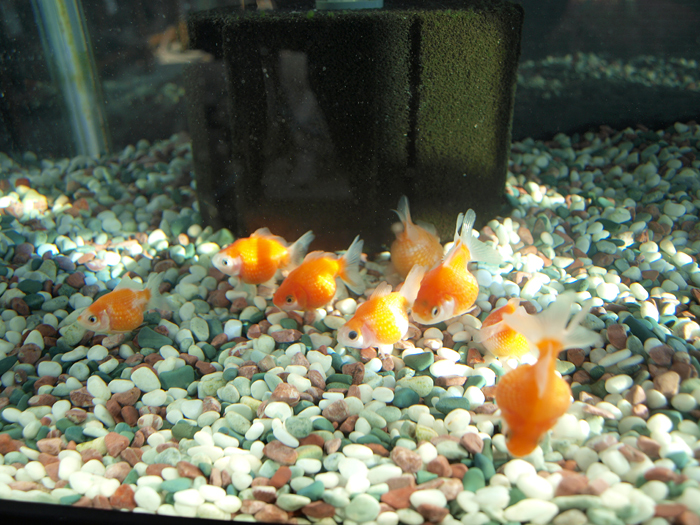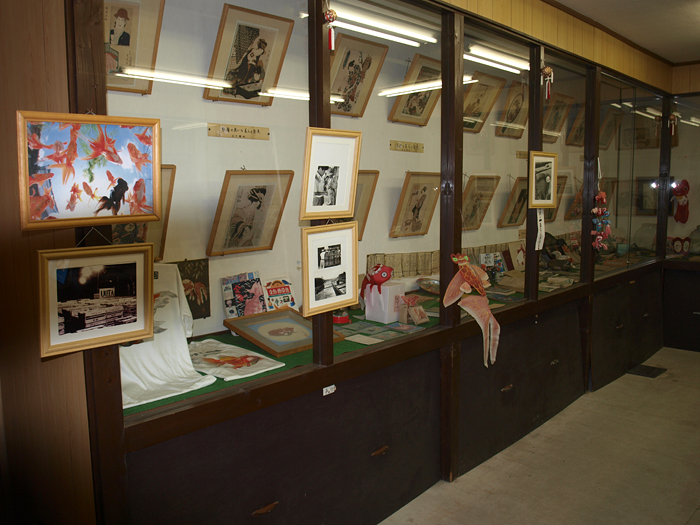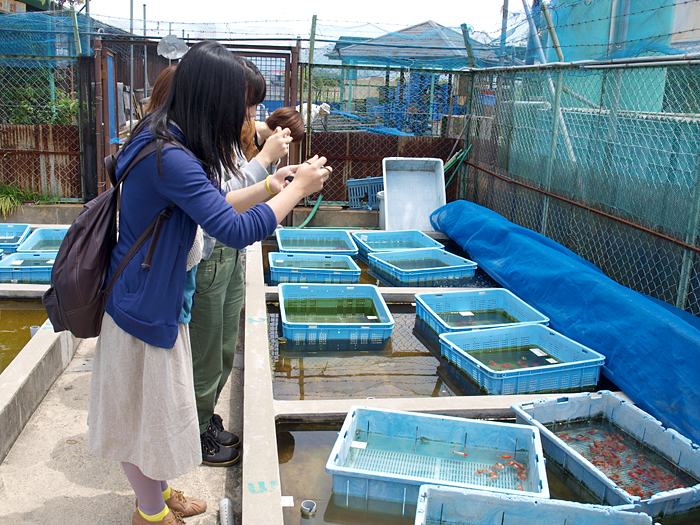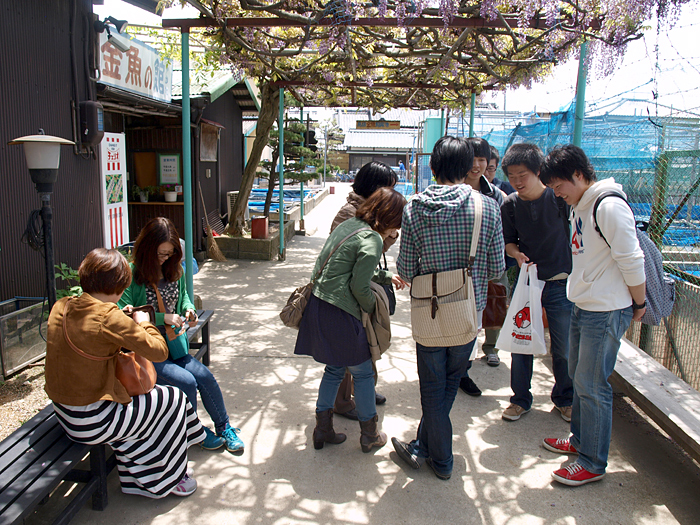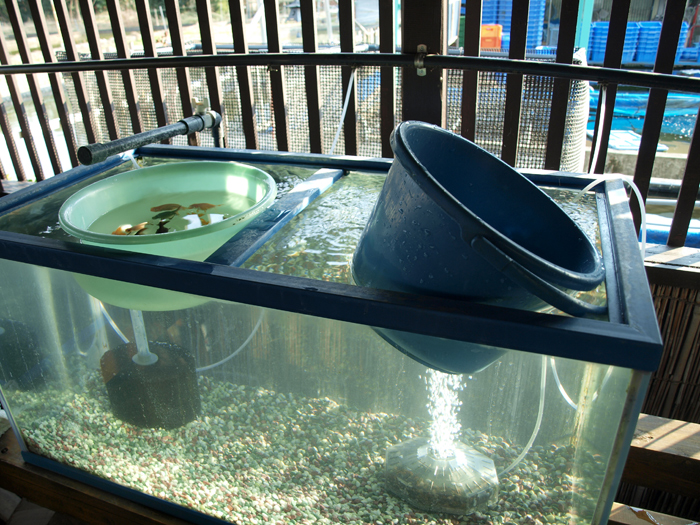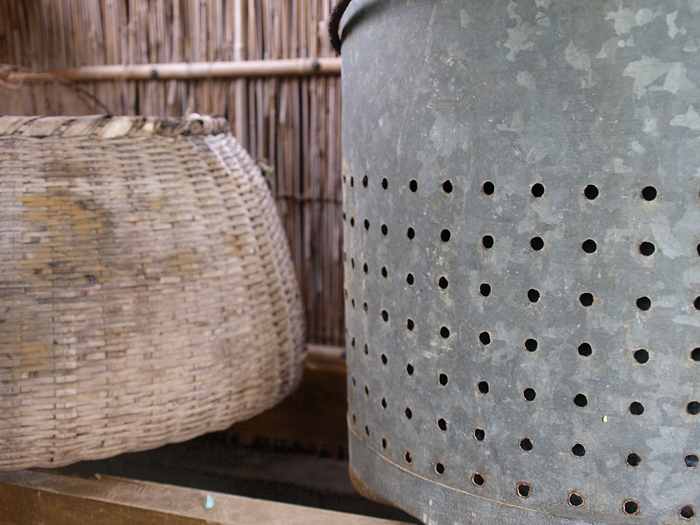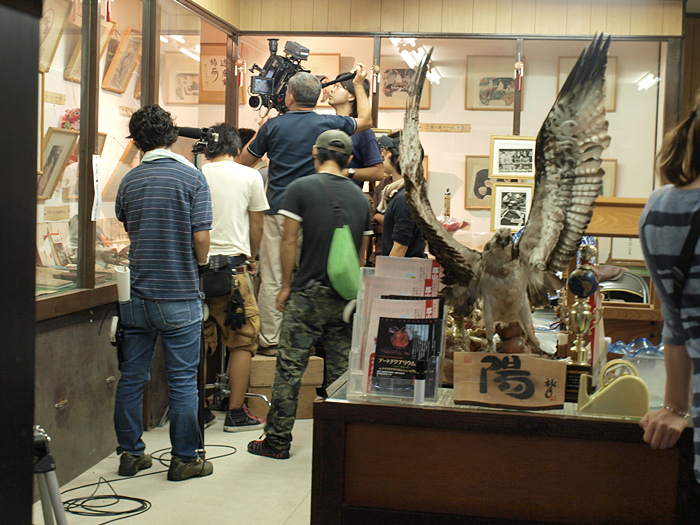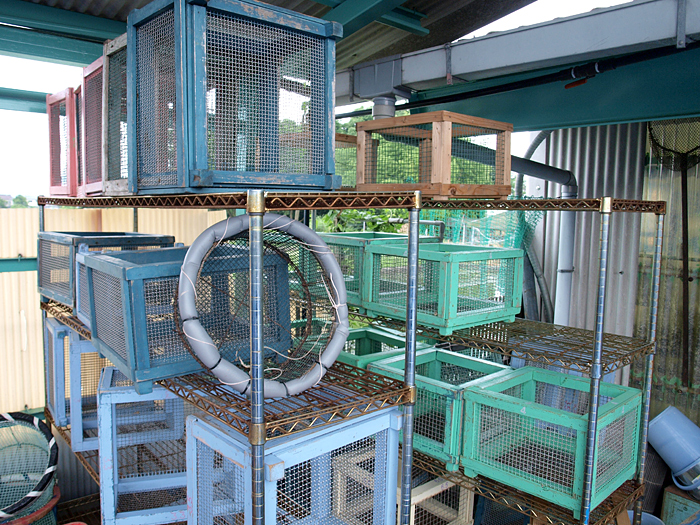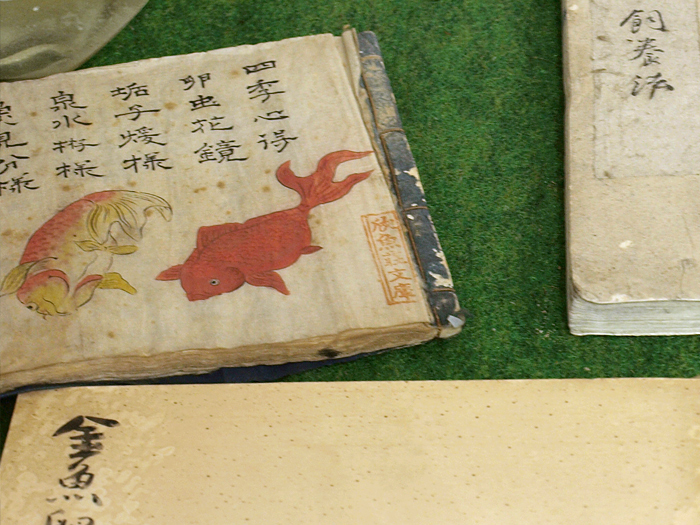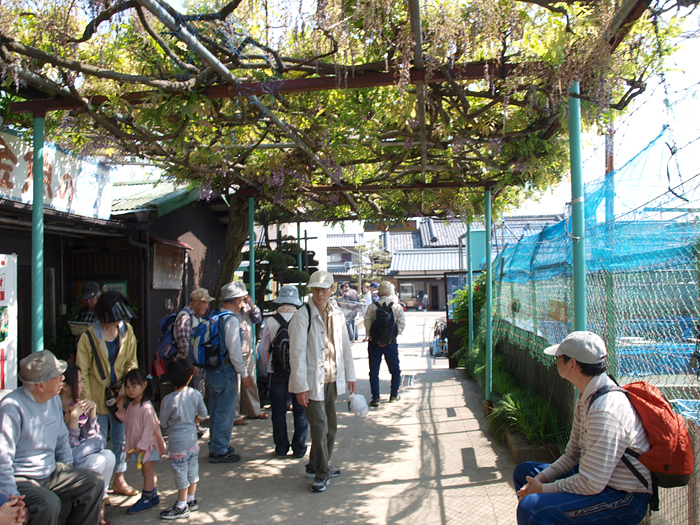Koriyama Goldfish Museum
107
Niki,
YamatoKoriyama-city,
Nara,
Japan,
639-1021
Tel:
+81-743-52-3418@info@kingyoen.com
Operating Hours
10:00 -17:00 (Closed on Monday every month. )
Admission Fees
Free
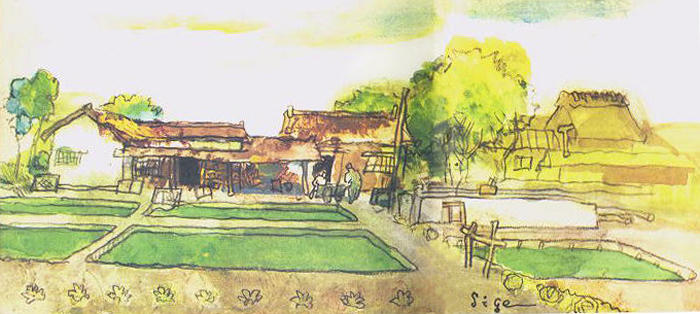
In 1982, Former Representative Masaji Shimada founded the Koriyama Goldfish Museum at his own expense, as ga collection of picture books with actually swimming goldfish.h Previously, there had been no tourist spot in Japan where visitors had been able to view goldfish throughout the year.
This museum exhibits about 40 kinds of goldfish, including ancestors and high-quality goldfish, as well as precious varieties that have been saved from extinction thanks to the efforts expended by the associations of a small number of goldfish lovers in various parts of Japan.
Folkloric Materials on Goldfish
With
the
improvement
of breeding
techniques
over
a long
period
of time,
obsolete
tools
for
goldfish
breeding
have
been
replaced
with
newly
invented
ones.
Here,
disused
breeding
tools
are
exhibited
and
preserved.
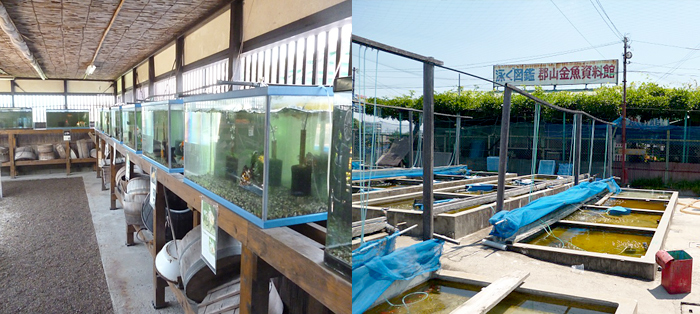
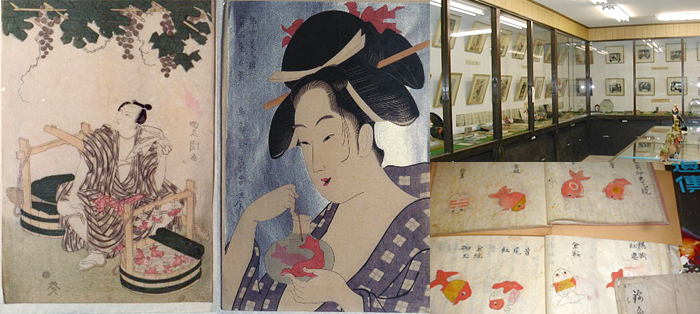
Exhibition of Old Books, Ukiyoe and Materials on Goldfish
Originally cherished only by the upper classes, goldfish began to be bred as pets by common people in Japan in about 1800. In step with this development, goldfish came to be shown or written about in Ukiyoe color prints, Haiku poems and novels. Also, goldfish was often depicted on ceramics and folk handicrafts. Most of the exhibited old books and Ukiyoe are precious ones collected by the late Yoshiichi Matsui, a goldfish researcher of international reputation. According to gYamato Kotohajime,h (1683) an old book that includes the first article on goldfish in Japan, goldfish first arrived in Japan (specifically at the port of Sakai) from China during the Genna period (1615|1624).The exhibits include many precious books, including gKingyo Yashinaigusa,h Japanfs first book on the breeding of goldfish; and gKingyo Monto,h a book published in 1903 which contains an illustration of Osaka Ranchu, a now extinct variety.
Image of Goldfish Kannon (completed in 1981)
This life-size image represents the Kannon (the Goddess of Mercy in Buddhism) who stands by a goldfish pond and watches the growth of goldfish with her merciful eyes.@The blue goldfish on the palm of the Kannon represents the wish of the imagefs creator that the fish bring people happiness, just as the blue bird in the famous tale does.
Yoshiichi Matsui (1891|1976)
A fisheries scientist and fish geneticist. Born in Yamaguchi Prefecture. Graduated from the Fisheries School (Main and Graduate Courses) of the Ministry of Agriculture and Forestry in 1917. Served as engineer at the Aichi Fisheries Research Institute and the Fisheries School. Also served as technical advisor in fisheries in Mexico and contributed to international cooperation. Appointed Lecturer at the Department of Physics of Kyoto University in 1958. Later appointed Professor at the Faculty of Agriculture of Kinki University and Director of the Shirahama Marine Laboratory of the University. Founded the Fisheries Science Course of Kinki University. Matsui also engaged in academic activities in international scientific societies, and contributed to the promotion of fisheries and education in the postwar era. His research interests spanned wide fields, including freshwater fish and pearls. His work gA Genetic Research of Goldfish Produced in Japanh (1934) is known internationally. Also, he published many books including gThe Encyclopedia of Goldfishh (1968) and gThe Encyclopedia of Pearlh (1965). He collected not only books on goldfish published in Japan and abroad, but also rare books, paintings, works of calligraphy, and antiques. Mr. Matsui and students are the sakes of research of a goldfish. It came to our company.
Past and Present: The History of Goldfish
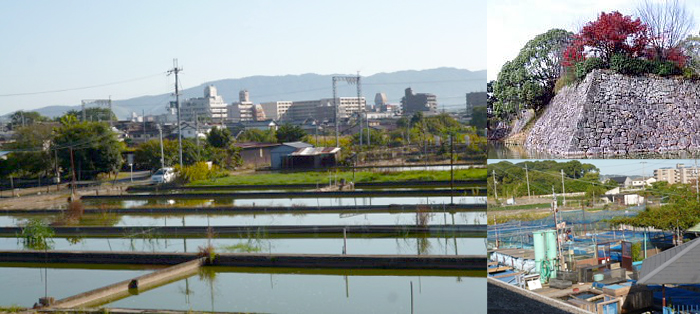
The
history
of goldfish
begins
with
the
red
species
found
among
a group
of wild
gfunah
also
known
as Crucian
Carp,
in the
southern
district
of China
some
2,000
years
ago.
These
red
ancestors
have
developed
into
the
goldfish
we are
familiar
with
today
through
selective
breeding
over
the
centuries.
It
is generally
believed
that
goldfish
were
introduced
to Japan
from
China
in 1502,
during
the
middle
of Muromachi
period.
However,
in those
days,
they
were
exclusively
kept
by the
aristocrats
and
the
wealthy
as rare
pets.
It was
not
until
the
Meiji
period,
after
the
Edo
military
government
was
brought
to end,
that
they
became
popular
among
common
people.
The
history
of goldfish
cultivation
in Yamatokoriyama
City
is said
to date
back
to 1724
when
Lord
Yanagisawa
Yoshisato
entered
Yamatokoriyama
domain
from
the
realm
of Kai
(present
Yamanashi
prefecture).
Goldfish
cultivation
became
a side
job
for
clansmen
and
samurai
around
the
end
of the
Edo
period,
and
gradually
developed
into
a thriving
side
business
for
jobless
samurai
and
farmers
after
the
Meiji
Restoration.
Of course,
behind
this
prosperity
there
was
the
unstinting
aid
of Lord
Yanagisawa
Yasunobu,
the
last
lord
of Yamatokoriyama
domain.
Besides
the
historical
background
mentioned
above,
Yamatokoriyama
has
been
blessed
with
favorable
conditions
for
goldfish
cultivation,
having
abundant
farm
ponds
that
provide
a good
water
supply
and
high
quality
water
that
is also
suitable
for
water
fleas
(daphnia)
the
live
food
for
goldfish
fries.
Due
to rapid
economic
growth
and
the
progress
of fish
farming
methods
in the
60fs
and
early
70fs,
the
production
rate
of goldfish
has
increased
annually,
resulting
in expansion
of the
market
to foreign
nations
including
western
countries
and
Southeastern
Asia.
Although
production
increase
has
dropped
recently
due
to environmental
damage
such
as water
pollution
caused
by urbanization,
Yamatokoriyama
still
has
nearly
60 goldfish
farms
with
approximately
90ha
in land
size.
Koriyama
sells
about
70 million
goldfish
and
300
thousand
colored
carp
a year.
Every
year
around
early
April,
when
the
season
of fully
bloomed
cherry
blossoms
arrives,
a goldfish
exhibition
is held
at Yanagisawa
Shrine.
This
shrine
has
been
deeply
associated
with
goldfish.
The
show
draws
not
only
the
residents
of the
city,
but
also
goldfish
admirers
from
nearby
areas

